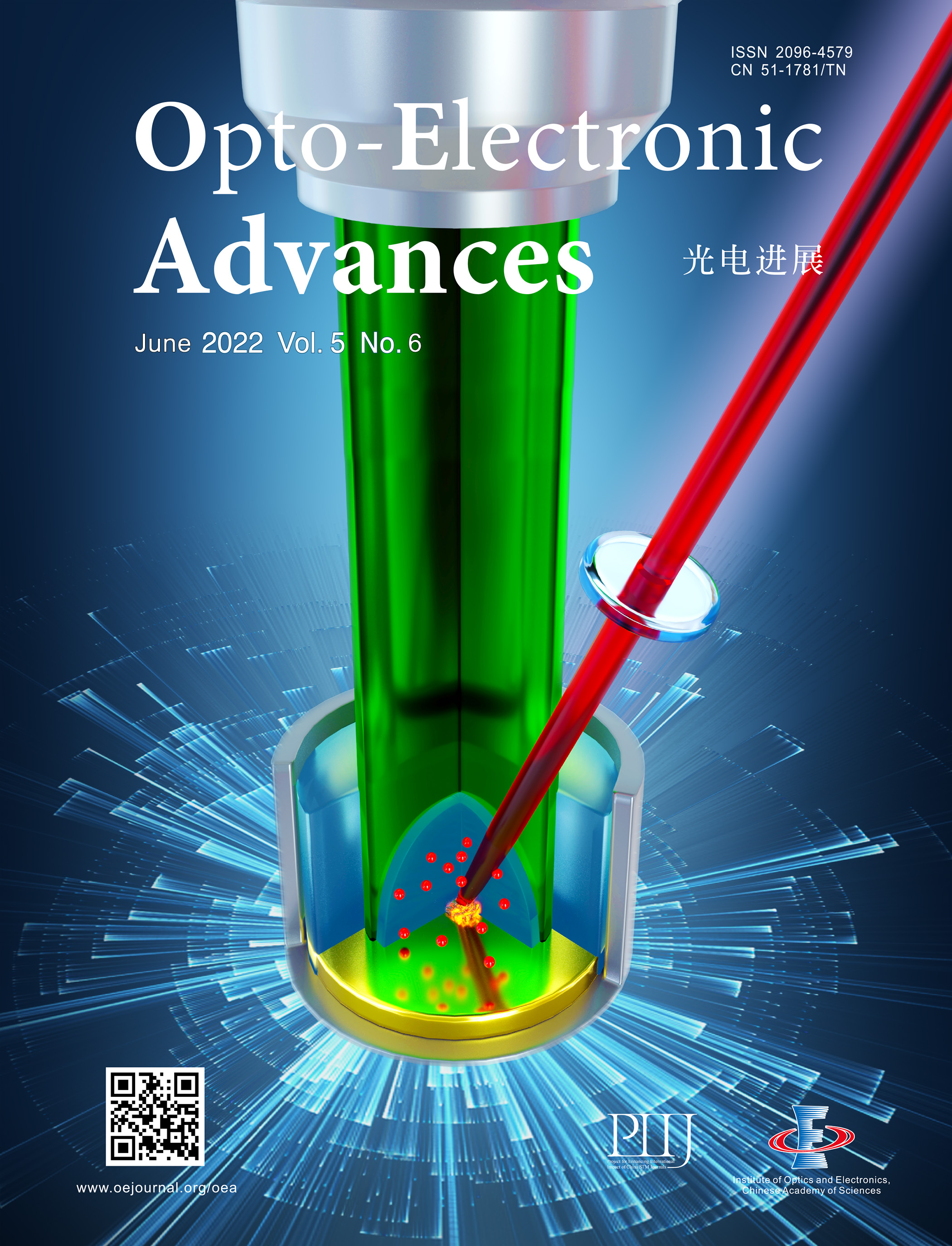2022 Vol. 5, No. 6
Cover story: Buono WT, Forbes A. Nonlinear optics with structured light. Opto-Electron Adv 5, 210174 (2022)
Light can be tailored, much like cloth, weaving and stitching a pattern into the very fabric of light itself. This so-called structured light allows one to access, harness and exploit all light's degrees of freedom, for seeing smaller in imaging, focusing tighter in microscopy and packing more information into light for classical and quantum communications. In this article, the authors show how structured light with nonlinear optics can surpass the linear toolkit, mixing degrees of freedom in unusual ways, altering selection rules and producing sometimes counter-intuitive results. This includes light diffracting off light, new forms of structured light by the product of light fields rather than just their sums, and advanced quantum control beyond the linear beam splitter. An exciting avenue is the use of advanced structured matter such as metasurfaces and metamaterials to create artificial nonlinear materials to customize and control structured light, offering unparalleled nonlinear efficiency. The authors unpack the physics of nonlinear optics in the context of structured light, the first report to do so, and offer a holistic introduction to the topic from fundamentals to applications.
Back cover story: Yang X, Lin Y, Wu TZ, Yan ZJ, Chen Z et al. An overview on the principle of inkjet printing technique and its application in micro-display for augmented/virtual realities. Opto-Electron Adv 5, 210123 (2022).
Inkjet printing technology shows great potential in microfabrication due to its advantages of digitalization, patterning, additive manufacturing, low waste of material, and large-area printing. In particular, the emergence of super inkjet (SIJ) technology can achieve ultra-high-resolution printing with the minimum printing line width falling in sub-micrometer scale. This SIJ technique shed light on the fabrication of high-resolution color conversion layer for micro-LED to realize full-color display, and in specific, for the augmented/virtual realities (AR/VR). Recently, Professor Rong Zhang's group in Xiamen University, in cooperation with prof. Hao-Chung Kuo in Taiwan Chiao Tung University, overviewed the principle of inkjet printing technique and its application on micro-display for AR/VR. In this review article, the progress of AR/VR technologies is first introduced, followed by the discussion of the adaptability of micro-LED display technology in AR/VR and the advantage of printing color conversion layer for micro-LED by inkjet printing technology. In the second part, various inkjet printing technologies, as well as two key issues — the optimization of ink and the reduction of coffee-ring effects, were introduced. Finally, some potential problems associated with the color conversion layer are highlighted. This review article servers as a reference for those who are about to get access to the areas of inkjet printing technologies, micro-LED full colorization and its application in AR/VR.
Inner cover story: Dittrich S, Spellauge M, Barcikowski S, Huber HP, Gökce B. Time resolved studies reveal the origin of the unparalleled high efficiency of one nanosecond laser ablation in liquids. Opto-Electron Adv 5, 210053 (2022).
Laser ablation in liquid is a nanoparticle production method with applications in areas such as catalysis, biomedicine, or additive manufacturing. However, due to laser-liquid and laser-plume interactions during the ablation process, different energy dissipation channels lead to reduced laser energy available for nanoparticle production limiting the productivity of the method. Recently, the groups of Professor Bilal Gökce from the Chair of Materials Science and Additive Manufacturing of University of Wuppertal and Professor Heinz Huber from the Lasercenter of Munich University of Applied Sciences reported a study in which they explore the pico- to nanosecond pulse duration regimes to find the pulse duration with highest nanoparticle ablation efficiency. Utilizing pump-probe microscopy imaging they reveal that pulse durations of 1 – 2 ns enable the most efficient laser ablation in liquid since the laser beam shielding by the ablation plume and cavitation bubble sets in only at longer pulse durations. And dissipation channels by non-linear effects of short pulse durations are avoided. This research has opened up new ways for increasing the productivity of the laser-based nanoparticle synthesis method.

-
{{article.year}}, {{article.volume}}({{article.issue}}): {{article.fpage | processPage:article.lpage:6}}. doi: {{article.doi}}{{article.articleStateNameEn}}, Published online {{article.preferredDate | date:'dd MMMM yyyy'}}, doi: {{article.doi}}{{article.articleStateNameEn}}, Accepted Date {{article.acceptedDate | date:'dd MMMM yyyy'}}CSTR: {{article.cstr}}
-
{{article.year}}, {{article.volume}}({{article.issue}}): {{article.fpage | processPage:article.lpage:6}}. doi: {{article.doi}}{{article.articleStateNameEn}}, Published online {{article.preferredDate | date:'dd MMMM yyyy'}}, doi: {{article.doi}}{{article.articleStateNameEn}}, Accepted Date {{article.acceptedDate | date:'dd MMMM yyyy'}}CSTR: {{article.cstr}}

 E-mail Alert
E-mail Alert RSS
RSS




